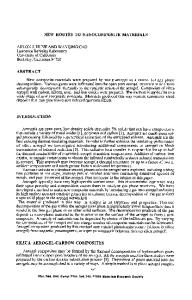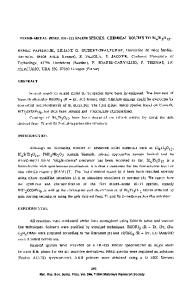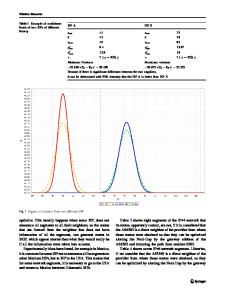New Chemical Routes to Metal Nitrides
- PDF / 430,256 Bytes
- 11 Pages / 420.48 x 639 pts Page_size
- 46 Downloads / 351 Views
NEW CHEMICAL ROUTES TO METAL NITRIDES Wayne L. Gladfelter*, Jen-Wei Hwang*, John F. Evans*, Scott A. Hanson*, Klavs F. Jensen#, and Kwok-Lun Ho# Department of *Chemistry, University of Minnesota, Minneapolis,
Minnesota
55455 and Department of *Chemical Engineering, Massachusetts Institute of Technology 66-250, Cambridge, MA 02139
ABSTRACT After a brief introduction on how the differing properties of H20 and NH 3 may effect the strategies used to synthesize metal nitrides, an overview of our use of azides to produce aluminum nitride thin films will be presented.
The effect of changing the nitrogen source to one which contains at least one N - C bond is to increase dramatically the carbon content of the films. Replacing the alkyl groups attached to the aluminum with hydride ligands removes the final carbon source and forms what appears to be a promising new class of precursors. This is demonstrated by the study of the reaction of Me 3 NGaH NH
3
to produce the novel trimer, [H2GaNH2] 3 .
converts at 150*C into gallium nitride.
3
with
This fully characterized molecule
Surprisingly, it yields GaN having the
sphalerite structure instead of the known wurtzite phase.
A discussion of the
reasons for this unusual route to a new crystalline phase of GaN is included. INTRODUCTION Just as water is the most common oxygen source in the preparation of oxide ceramics from molecular precursors, ammonia is the most frequently nitrogen source for metal nitrides[1].
used
We would like to focus momentarily on
some of the differences between these two compounds that have made the development of a nitrogen-based sol-gel process so difficult. The first difference is the much higher acidity of H20 compared to NH3. For removal of the first proton their respective pKa values are 15.7 and 35. The high value for the pKa of NH3 places restrictions on the type of metal precursor that can be used in the reaction.
Equilibrium constants for reaction of metal alkoxides with ammonia
will be far less favorable.
Some reactions will undoubtedly occur, but the
general use of this process for complete ammonolysis is unlikely. More basic ligands such as dialkylamides (R2N-) should serve this purpose and examples of using these complexes for the preparation of nitrides from ammonia as well as oxides from water are known[2]. Reactive metal alkyls such as AlMe3 have also Mat. Res. Soc. Symp. Proc. Vol. 180. @1990 Materials Research Society
1018
been used to deprotonate NH3, and in some cases the rates of the first and second eliminations of alkane differ enough to allow isolation of the product. Interrante and coworkers have found that the cyclic trimer, [R2AINH2]3 where R = Me, Et, i-Bu, and t-Bu, is formed at low temperatures from the reaction of AIR3 and NH3 and can be pyrolyzed to give AIN at relatively mild temperatures[3,4]. Less-reactive alkyls, such as those bound to silicon, are more reluctant to undergo this type of reaction; a feature that has allowed the synthesis of a variety of polysilazanes which are valuable as precursor
Data Loading...











